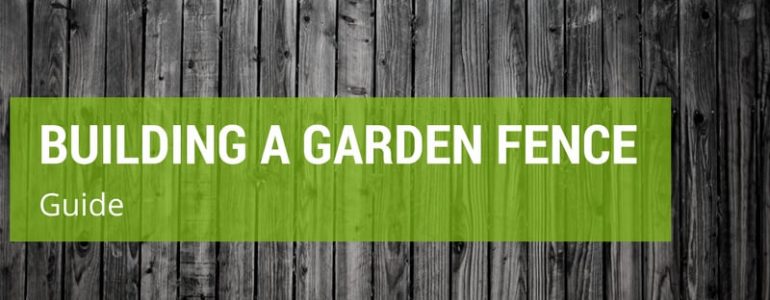It’s nice to have wildlife visit your yard, but there are certain areas you’d rather not share, such as your flower and vegetable gardens.
In this article, I will provide instructions and information to help you construct a garden fence to protect your blossoms and veggies from animals – deer, rabbits and other ground dwelling critters. Read on to learn more.
Gather Your Supplies
Here’s what you’ll need to build a simple garden fence:
- Enough sturdy 10’wooden fence posts to place at each corner, on either side of the gate opening and every 18-20’ if needed
- Enough 8’ metal T-posts to place 6’ apart around the circumference of your garden
- A 6’ high gate (pre-made or home-made)
- Gate hardware as needed
- 6’ high wire mesh fencing
- 3’ high hardware cloth
- Plenty of zip ties
- Fencing staples
- Cement (optional)
Tools:
- Tools necessary for assembling and installing your gate
- Sledge hammer or post setter
- Post-hole digger or auger
- Wire cutters
- Metal snips
- Hammer
- Shovel
- Stakes
- Twine
Follow These Steps:
1. Determine where your garden will be. Measure and mark off the space using stakes and twine. Dig a narrow trench, 1’ deep all the way around the circumference of the garden space, excluding the area where your gate will be.
2. Use your auger or post-hole digger to dig 2’ deep holes for your wooden posts. Set the posts securely, using cement if desired.
3. Lay your T-posts out at 6’ intervals between your wooden posts, then work your way around your garden space driving the T-posts into the ground to a depth of 1’. Leave them a little loose at this point so that you can get your low hardware cloth fence into position.
4. Use the hardware cloth to create a low fence all the way around the outside of the area (excluding the gate area). Using this smaller mesh at the base keeps small animals like rabbits out. Slide the hardware cloth into your trench. Place it all the way around, loosely at first. Then go back and secure your T-posts, attach one end of the hardware cloth securely to one gate post with staples. Go all the way around the garden space, stretching it tight and securing it to the T-posts with zip ties. Fill in the trench and tamp down the T-posts.
TIP: Take care when initially securing the hardware cloth and the fence wire to the gate post. It is very easy to become preoccupied with the overall project and accidentally secure it in such a way that you end up blocking your gate! Be sure to choose the right post so you don‘t end up blocking your gate opening!
5. Use a hammer and fencing staples to secure the end of the wire mesh fence to one of the gate posts and wrap the roll around the exterior of your garden. The top of the fencing should be even with or just slightly below the top of the posts. It does not have to come in contact with the ground because the hardware cloth will prevent animals from slipping or tunneling under the fence. You can wrap the fencing loosely to start and then go back and stretch it, tighten it and secure it with the zip ties. Be sure the fence wire is on the exterior of the poles so that animals cannot push it loose from the outside.
6. Install your gate. Your gate can be a nice, purchased gate that comes with hardware, or you may wish to build a gate to match your fencing and use strap hinges to swing it and a hook and eye to secure it. Alternately, you may wish to use your imagination and recycle something you have hand as a gate.
TIP: To prevent animals from going under the gate, lay down some paving stones or a thick layer of gravel to close any gaps and make digging difficult.







